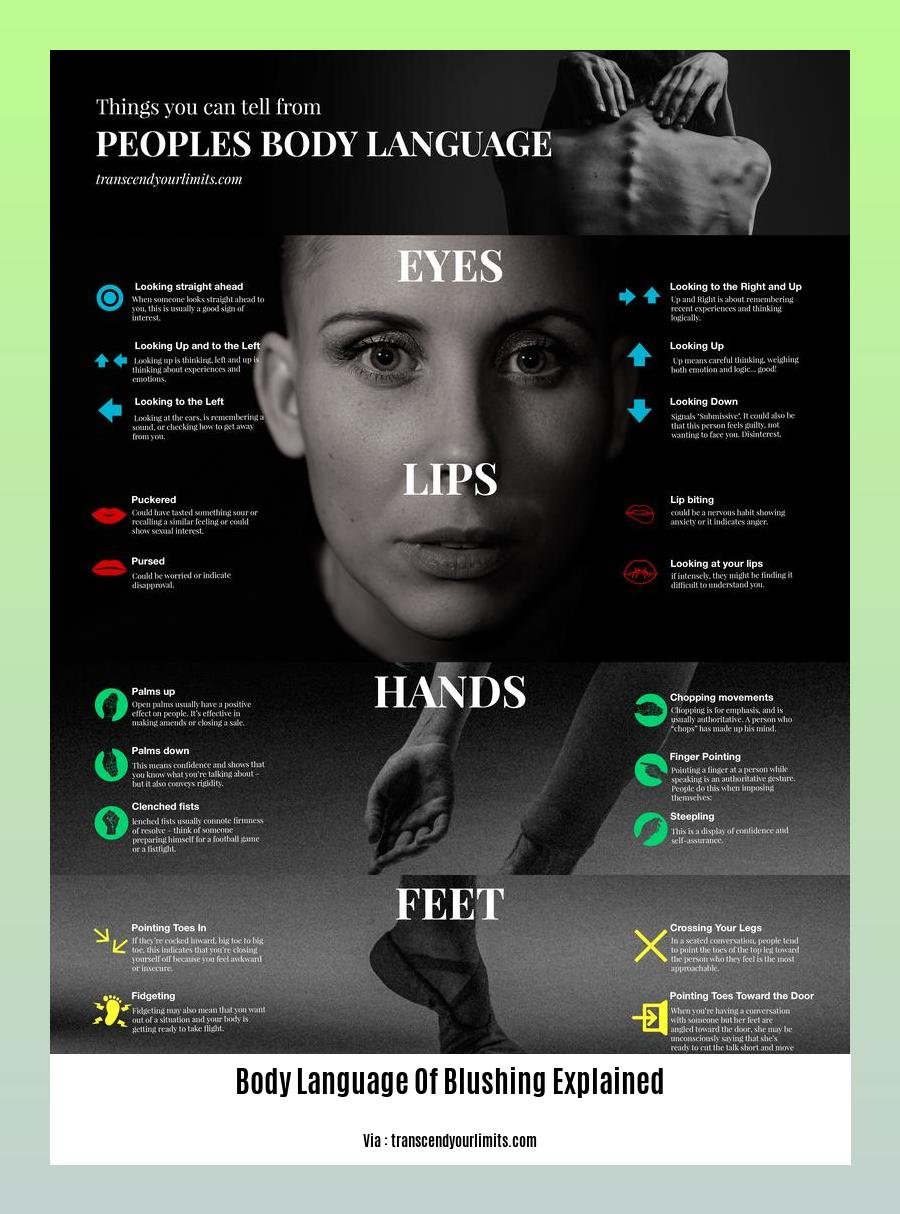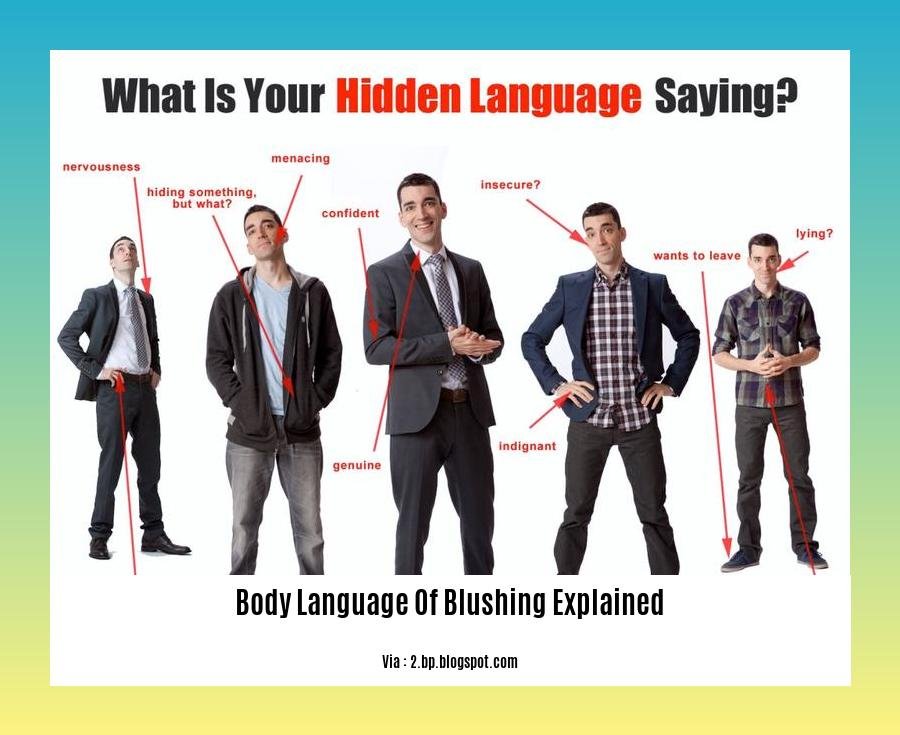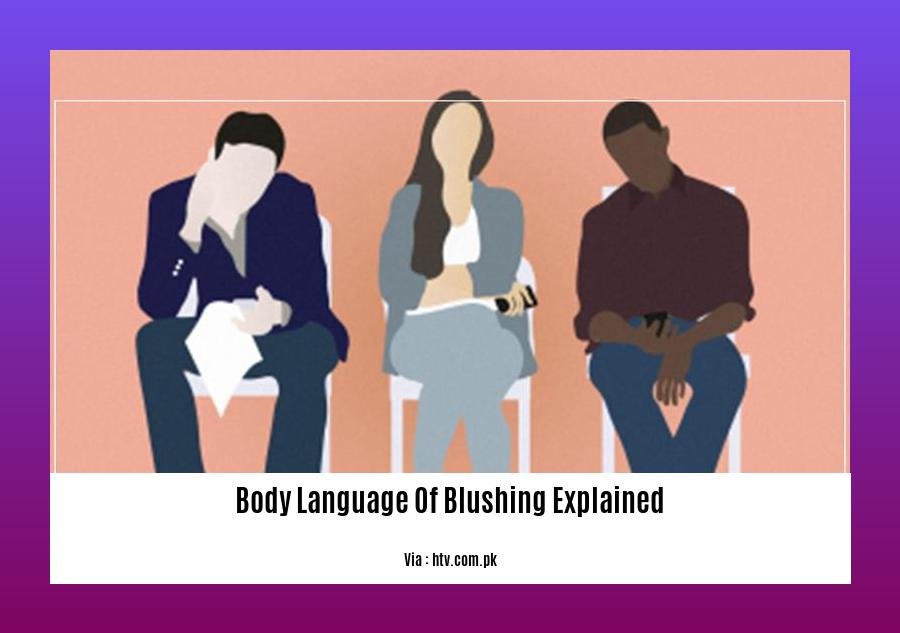Step into the captivating world of body language with Demystified: The Body Language of Blushing Explained. Blushing, an intriguing physiological response, tells a myriad of tales through our bodies. Join us as we decode the subtle signals, gestures, and physiological cues that accompany this fascinating phenomenon, unveiling its hidden meanings and cultural nuances.

Key Takeaways:
- Blushing is a natural response to emotional distress or overheating.
- It is an involuntary process that humans cannot control.
- Blushing is a unique human trait not observed in other animals.
- It plays a role in social interactions, sometimes acting as a face-saving mechanism.
Body Language of Blushing Explained
Blushing, the sudden reddening of our faces, is a fascinating physiological and behavioral response that conveys a wealth of social and emotional cues. It’s not just about feeling embarrassed or shy! Let’s dive into the body language of blushing explained.
Physically, blushing occurs when the sympathetic nervous system releases adrenaline, causing blood vessels to dilate and blood to rush to the face. This results in the characteristic flush that signals a range of emotions.
Blushing can be either reflexive, a natural response to specific triggers, or pathological, an excessive and uncontrollable form. Understanding the context and characteristics of blushing helps us interpret its meaning.
This involuntary response serves several important functions:
- Communication: Blushing conveys vulnerability, apology, or even forgiveness. It can help end uncomfortable situations.
- Self-Regulation: It encourages socially appropriate behavior by creating discomfort in embarrassing situations.
- Affiliation: Sharing a moment of vulnerability through blushing can foster social bonding.
Interpreting Blushing
When faced with blushing, consider:
- Context: Cultural norms and social relationships influence the meaning of blushing.
- Intensity: The severity of the flush reflects the intensity of the emotion.
- Duration: Prolonged blushing may indicate underlying anxiety or embarrassment.
Managing Blushing
While blushing is a natural response, there are ways to manage its impact:
- Identify Triggers: Understand the situations that trigger blushing.
- Cognitive Reframing: Challenge negative thoughts and beliefs associated with blushing.
- Relaxation Techniques: Deep breathing, meditation, and muscle relaxation can reduce stress and anxiety.
- Social Skills Training: Improve communication and social interaction to boost confidence and reduce anxiety.
Blushing is a complex and nuanced form of body language that provides insights into our emotions and intentions. By understanding its physiological basis, social implications, and ways to manage it, we can better navigate the social landscape and connect with others.
-
Want to learn more about female blushing and giggling body language cues? A smile is a universal sign of happiness, but what does it mean when a girl giggles and blushes?
-
Feeling shy giggling and what it means? Giggles can be a sign of nervousness, embarrassment, or even attraction. But what does it mean when a girl giggles around you?
-
Do you want to know the the attraction meaning of giggles and blushes? Blushing is often seen as a sign of attraction, but what does it mean when a girl blushes around you?
Social and Psychological Implications
Blushing, a common response to embarrassment or shyness, carries significant social and psychological weight. It signals vulnerability, conveys apologies, and encourages prosocial behavior.
In social situations, blushing can inhibit inappropriate actions and promote bonding through shared vulnerability. However, it can also create a sense of incompetence and anxiety, especially when involuntary and uncontrollable.
Fear of blushing, known as erythrophobia, is a symptom of social anxiety disorder, with severe blushing being prevalent in such individuals.
Key Takeaways:
- Blushing is a multifaceted communication cue that conveys social and emotional messages.
- It serves as a self-regulatory mechanism and promotes social bonding.
- Excessive blushing can be a sign of underlying anxiety and social discomfort.
- Identifying triggers and practicing relaxation techniques can help manage blushing intensity.
Source:
Explainer: why do we blush?
Interpreting Blushing
Blushing is a natural reaction triggered by emotions like embarrassment or shyness. It’s a way for our bodies to communicate how we’re feeling, but what exactly does it mean?
Types of Blushing
There are two main types of blushing:
- Reflexive blushing: Involuntary response to triggers like embarrassment.
- Pathological blushing: Excessive and uncontrollable blushing, often linked to anxiety or medical conditions.
Interpreting Blushing
Consider the Context:
- Social situations, cultural norms, and relationships can influence the meaning of blushing.
Intensity:
- The severity of blushing can indicate the level of emotion.
Duration:
- Prolonged blushing may point to underlying anxiety or embarrassment.
Managing Blushing
- Identify Triggers: Understand the situations that tend to trigger your blushing.
- Cognitive Reframing: Challenge negative thoughts associated with blushing.
- Relaxation Techniques: Practice deep breathing or meditation to reduce stress.
- Social Skills Training: Improve communication and social skills to build confidence.
Key Takeaways:
- Blushing is a common physiological response to various triggers.
- Understanding the context and characteristics of blushing helps us better decipher others’ emotions and intentions.
- While blushing can be embarrassing, it’s generally harmless and can serve as a social signal.
- Managing blushing involves identifying triggers, cognitive reframing, relaxation techniques, and social skills training.
Source: The Body Language of Blushing
Tips for Managing Blushing
Have you ever been in a situation where you felt like your face was on fire? You were embarrassed beyond belief, and your cheeks were burning red? I think we all know that feeling. Blushing is a common involuntary response to feeling embarrassed, shy, or even guilty. It is triggered by a physiological reaction to social situations, but it can be challenging and embarrassing to manage.
Key Takeaways:
- Understanding blushing and its triggers helps you better manage it.
- Changing our thoughts, practicing relaxation techniques, and embracing social skills can help reduce blushing intensity.
- Remember, blushing is a natural response and not something to be ashamed of.
Understanding Blushing
Blushing is a physiological response controlled by our sympathetic nervous system. When we experience specific emotions, our bodies release adrenaline, increasing blood flow to our faces, causing us to blush. This reaction is beyond our control, but understanding why we blush is the first step to managing it.
Tips for Managing Blushing
- Identify Your Triggers:
Knowing what situations make you blush will help you prepare. Whether it’s public speaking, meeting new people, or feeling self-conscious, understanding your triggers will equip you with the knowledge to manage your response proactively.
- Cognitive Reframing:
Instead of viewing blushing as a negative, try to reframe your thoughts. Remember, it’s a natural response, and there’s no need to feel embarrassed about it. Embrace the blush, it’s a sign of your humanness.
- Relaxation Techniques:
Practice relaxation techniques like deep breathing, meditation, and yoga to manage the physical symptoms of blushing. These techniques help calm your nervous system and reduce your overall stress levels.
- Social Skills Training:
While not a direct fix, improving your social skills can build confidence and reduce the anxiety that often triggers blushing. Join social groups, practice active listening, and engage in conversations that make you feel comfortable.
Conclusion:
Managing blushing requires self-awareness, acceptance, and a willingness to change your perspective. Remember, blushing is a natural part of being human. It’s not something to be ashamed of, but rather a part of you that can be managed. By following the tips outlined above, you can learn to control your blushing and feel more confident in social situations.
Citation:











